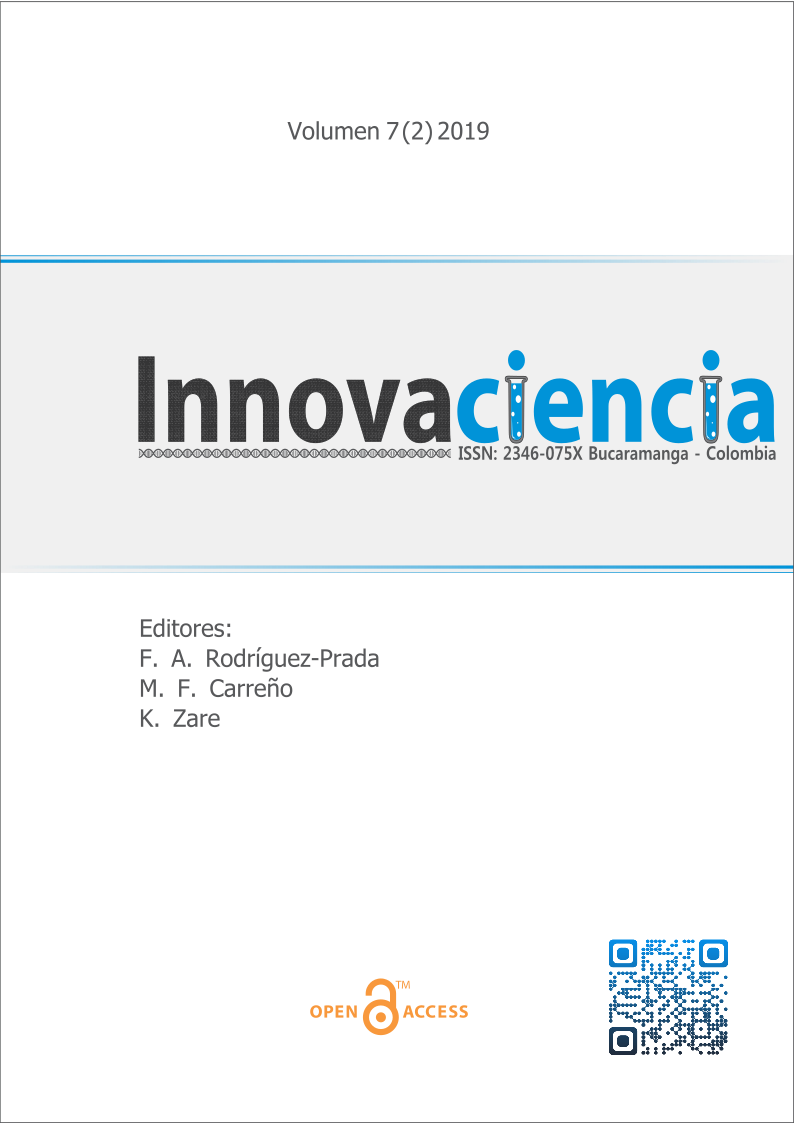Estudio comparativo de las mezquitas timúridas con las iglesias góticas evolucionadas
DOI:
https://doi.org/10.15649/2346075X.762Palabras clave:
Comparative study, Timurid, Evolved Gothic, ArchitectureResumen
Considering the wealth of glorious religious buildings in the Timurid period in Iran, which was
contemporaneous with the Evolved Gothic period in Europe, a comparative study has been undertaken
to explore the architectural effects of these two periods on each other along with their similarities and
differences. This is an applied historical research that adopts a library research method for data collection.
By studying the political, economic, and cultural conditions of these periods and by reviewing five
important buildings belonging to each period, the similarities and disparities of these two architectural
styles are investigated to shed further light on the interaction of the Timurid and Evolved Gothic
architecture. Despite the geographic distance, and religious and culture different between the Timurid
period in Iran and the Evolved Gothic in Europe, which overshadows the interaction of these two
periods, one can still witness that the religious architecture of the Evolved Gothic period has been
inspired by Timurid architecture in some respects, including building materials, interior decoration of
buildings and architectural style.
Referencias
Razi, Abdullah (1962). Complete History of Iran. Edited by Kazem Kazemzadeh Iranshahr, Tehran: Tabesh.
Blair, Sheila and Jonathan Bloom (2002). Islamic Art and Architecture. Translated by Yaghub Azhand, Tehran: SAMT.
Blair, Sheila and Jonathan Bloom (2003). Islamic Art and Architecture in Iran and Central Asia during the Period of the Ilkhanis and Timurid.
Wilber, Donald and Lisa Glambeck (1995), Timurid Architecture in Iran and Turan. Translated by Karmatullah Afsar and Mohammad Yousef Kiani. Tehran: Heritage Organization of Iran
Hillen Brand, Robert, (2006). Islamic Art and Architecture. Translated by Ardeshir Eshraqi, Tehran: Rozaneh.
Mirjafari, Hossein (2000). History of political, social, economic and cultural changes of Iran during the Timurid and Turkmens. Tehran: SAMT.
Damand, Maurice Auson (2004). A guide to Islamic industries. Translated by Abdollah Faryar, Tehran: Elmi va Farhangi publication.
Pirnia, Karim, (2007). Stylistics of architecture in Iran. Edited by Gholam Hossein Memarian, Tehran: Soroush Danesh.
Goshayesh, Farhad (2000). The history of Art in Iran and the world. Tehran: Efaf.
Crandel, Ansisir, (2005). The history of art in Middle Ages. Translated by Hasan Afshar, Tehran: Markaz Publication.
Gardner, Helen. (1986). Art in the course of time. Translated by Mohammad Taghi Faramarzi, Tehran: Agah
Dornyei, Z. (2011). Transfiguration, beauty and biblical interpretation. England: University of Nottingham.
Vaziri, Ali Nagi (1984). General history of illustrated arts. Tehran: Hirmand.
Braccons, Jose (2002). A guide to Gothic art. Translated by Sima Zolfaghari, Tehran: Saghi Publishing.
Anderson, Sh. (2003). The use of candle as a symbol in worship. CCWS and the author .
Vernikos, Fr. (2013). The Meaning Of The Use Of The Candle, The Incense And The Vigil Oil Lamp . Paracletos Greek Orthodox Monastery.
USCCB. (2007). Sing To The Lord: Music In Divine Worship. United States Conference Of Catholic Bishops.
Carli, E.(215). Siena Cathedral and The Cathedral Mu seum. Italy:Lito Terrazzi
Rafiee, Mahtab, Hasti Beshrootani and Parinaz Hosseini (2009). Selection of Iranian Art History. Tehran: Chaharsuye Honar

Descargas
Publicado
Cómo citar
Descargas
Número
Sección
Licencia
Todos los artículos publicados en esta revista científica están protegidos por los derechos de autor. Los autores retienen los derechos de autor y conceden a la revista el derecho de primera publicación con el trabajo simultáneamente licenciado bajo una Licencia Creative Commons Atribución-NoComercial 4.0 Internacional (CC BY-NC 4.0) que permite compartir el trabajo con reconocimiento de autoría y sin fines comerciales.
Los lectores pueden copiar y distribuir el material de este número de la revista para fines no comerciales en cualquier medio, siempre que se cite el trabajo original y se den crédito a los autores y a la revista.
Cualquier uso comercial del material de esta revista está estrictamente prohibido sin el permiso por escrito del titular de los derechos de autor.
Para obtener más información sobre los derechos de autor de la revista y las políticas de acceso abierto, por favor visite nuestro sitio web.















